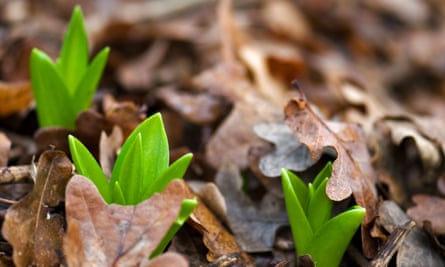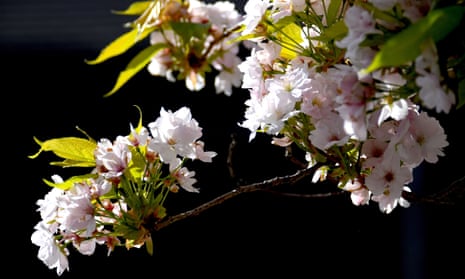This weekend, I sowed the first of my seeds of the season. Five varieties of tomato and two different kinds of aubergine. I’m not one for sowing seeds early, but tomatoes and aubergines need every day of the growing season in this country to offer up the best possible harvest. Last summer, the tomatoes were incredible: they thrived in that mind-bending heatwave. They more than made up for the year before when blight obliterated every plant before even one tomato had dared to ripen. No two years are ever the same in the veg patch.
Gardeners and growers are well versed in the nature of change. Understanding how the shifting seasons and weather patterns affect our plants enables us to determine when our interventions will be most timely. This year, gardeners at the Royal Horticultural Society, who have been studying buds across the country, are reportedly expecting a bumper blossom in spring. The combination of last year’s heat and light with the cold snap this February is expected to produce ideal conditions for flowering.
That said, there’s always an element of guesswork, as we watch the sky and the mercury, check our diaries and last year’s notes, then try to guess when the last frost will pass. We attempt to follow the gardening calendar even though so little in our gardens can be accurately predicted.
Despite what plants have taught me about living and working with forces beyond my control, I’m nonetheless prone to bouts of climate anxiety. All it takes is a few days of unexpectedly erratic weather for panic to rise up in my throat. The sheer scale of the climate crisis has felt so overwhelming at times that I’ve found myself succumbing to hopelessness at times. Yet, it is through working with plants that I’ve found an antidote to this particular angst – to pay even more attention to the wonder of the natural world instead of choosing to turn away. And right now, as winter gives way to spring, is the ideal time to institute a practice of noticing.
What that looks like for me is simply taking a few moments, whenever possible, to step outside and pause for long enough to notice what’s emerged or transformed. On the days I spend with my crops, I resist the urge to dive straight into all there is to do; instead I first stop to observe what’s new and what’s changed – even if all that does is add more tasks to my list.

After this winter, which has felt especially long and cold, I am ready for a change in season. I’m hungrily searching for green shoots and swelling buds. I’m listening out for the symphony of tenacious birdsong as dawn breaks earlier each day. I’m drinking in all the signs of new life that remind me that spring has always come and will in all likelihood be beautiful. When anxiety-inducing headlines have me feeling disempowered and wanting to disengage, I cultivate my sense of inherent connection to the natural world. This simply feels more possible in spring.
Whether it’s the northern lights, shimmering hues of purple and green through the night skies over Wensleydale, the swathes of blossom that are predicted to adorn the weeks to come or the best tomatoes I’ve ever grown, the natural world consistently proves worthy of our worshipful attention. And I take all these demonstrations of nature’s beauty and abundance to be urgent reminders of what we are being called to protect. Despite the very real challenges and dangers we face in this time of climate crisis, the natural world insists on showing us what resilience and optimism look like and it’s our responsibility to take note and follow suit.
As I write these words, I have a blanket on my knees but the window slightly open to allow a sliver of the cool breeze to blow in. The world feels fresh and enlivening and brimming with new energy. My tomato seeds are yet to germinate but I trust that they will. I trust that the plants I grow this season will thrive. And I know that spring, hopefully one that’s overflowing with blossom, is already on its way.
Claire Ratinon is an organic food grower and writer

